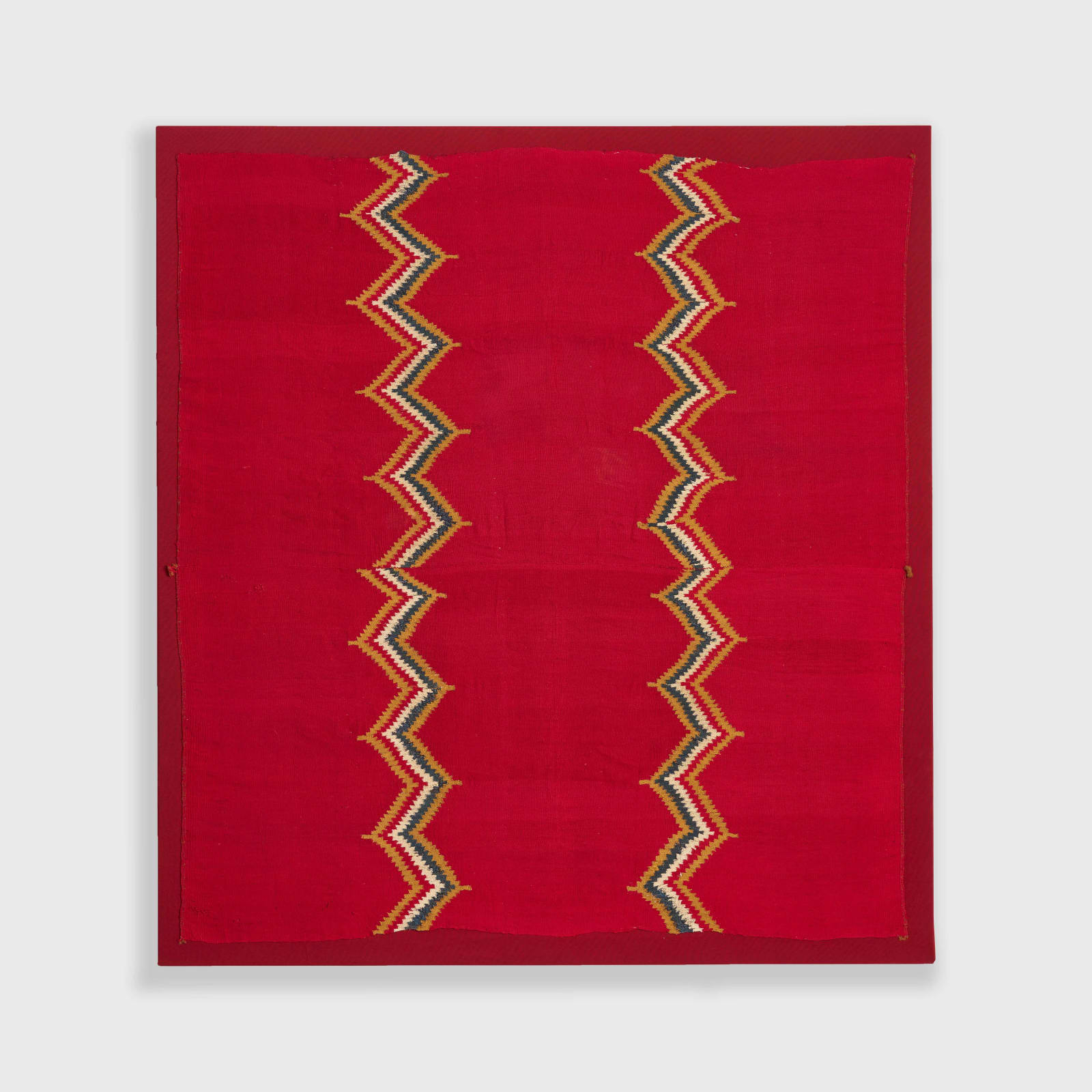Nazca Culture 100 BC-800 AD
Nazca / Wari transitional mantle, Circa. 500-800 AD
Camelid fibres
157 x 147 cm
61'8" x 57'8" in.
61'8" x 57'8" in.
NAZ0030
Copyright of Paul Hughes Fine Arts
Further images
From this point onward, this symbol of fertility appears as a leitmotif in almost all religious textiles. This motif, called the 'stepped meander,' is considered an allegorical symbol of the...
From this point onward, this symbol of fertility appears as a leitmotif in almost all religious textiles. This motif, called the "stepped meander," is considered an allegorical symbol of the theme of fertility. From then on, it adorned represented deities, decorated images of gods in textiles as a border or frame, and also appeared on the edges of ceramics. It embellished the clothing and headdresses of shamans and/or priests, as well as altars, temples, and tombs.
In 1944, Barnett Newman curated Pre-Columbian Stone Sculptures at the Betty Parsons Gallery, presenting ancient works from the Americas alongside his own. This quiet but radical gesture revealed his belief in a shared spiritual ambition between modern abstraction and ancient ritual art. Newman’s paintings—marked by fields of color interrupted by vertical "zips"—echo the structural clarity and symbolic force of Pre-Columbian textiles. Like the woven works of the Andes or Mesoamerica, his abstractions operate beyond decoration: they propose systems of meaning, presence, and time. In both, geometry becomes a conduit for the metaphysical, an architecture for the unseen.
In 1944, Barnett Newman curated Pre-Columbian Stone Sculptures at the Betty Parsons Gallery, presenting ancient works from the Americas alongside his own. This quiet but radical gesture revealed his belief in a shared spiritual ambition between modern abstraction and ancient ritual art. Newman’s paintings—marked by fields of color interrupted by vertical "zips"—echo the structural clarity and symbolic force of Pre-Columbian textiles. Like the woven works of the Andes or Mesoamerica, his abstractions operate beyond decoration: they propose systems of meaning, presence, and time. In both, geometry becomes a conduit for the metaphysical, an architecture for the unseen.
Join our mailing list
* denotes required fields
We will process the personal data you have supplied in accordance with our privacy policy (available on request). You can unsubscribe or change your preferences at any time by clicking the link in our emails.







